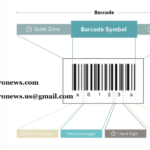In an era where digital resources are abundant and diverse, managing and accessing information efficiently has become a crucial skill. Link aggregation, or “링크모음,” is a technique that can transform how we interact with online content. This article will explore the essentials of link aggregation, its benefits, and practical advice on how to create an effective link collection.
What is Link Aggregation?
Link aggregation refers to the process of collecting and organizing multiple hyperlinks into a unified list. This method consolidates various online resources into one accessible location, allowing users to retrieve information quickly without navigating through multiple websites. Essentially, it’s about creating a centralized hub for related links.
Why Link Aggregation is Beneficial
- Consolidated Access to Information One of the primary advantages of link aggregation is that it consolidates access to multiple resources. Instead of searching through various websites, users can visit a single, organized list of links. This centralization simplifies the process of finding and utilizing online content.
- Organized and Structured Information Link aggregation helps maintain an organized structure for online resources. By categorizing and grouping links, users can easily find what they need. This organization reduces clutter and makes the process of accessing information more intuitive and straightforward.
- Enhanced Efficiency For professionals and students who often deal with extensive research or multiple resources, link aggregation improves efficiency. With a well-curated collection of links, users can quickly navigate to relevant information, saving time and effort that would otherwise be spent searching for individual resources.
- Discovery of Valuable Resources Aggregating links also helps users discover valuable content they might not have found otherwise. By curating a list of high-quality links, users are exposed to a range of useful tools, articles, and data that enhance their online experience.
How to Create an Effective Link Aggregation
- Determine Your Objectives Before you start, clarify the purpose of your link aggregation. Whether it’s for educational resources, professional tools, or personal interest, having a clear objective will guide the selection and organization of your links.
- Curate Relevant and Reliable Links Select links that are relevant to your objectives and ensure they come from reliable sources. Avoid including outdated or irrelevant links, as these can undermine the effectiveness of your aggregation. Regular updates are essential to keep the collection current.
- Organize Links Logically Arrange your links in a logical and user-friendly manner. Group them by topic, resource type, or relevance to facilitate easy navigation. A well-organized structure helps users quickly find the information they need.
- Add Descriptive Context Provide brief descriptions or annotations for each link. These should explain what the link leads to and its significance. Adding context helps users understand the value of each link and makes it easier for them to decide which resources to explore.
- Promote Your Link Collection Once your link aggregation is set up, share it through appropriate channels to reach your intended audience. Promote it via social media, newsletters, or on your website to increase visibility and encourage users to explore the resources you’ve curated.
Conclusion
Link aggregation, or “링크모음,” offers a practical approach to managing and accessing online information. By consolidating multiple links into a single, well-organized collection, users can streamline their search for resources, enhance their productivity, and uncover valuable content more efficiently. Whether for personal use or professional purposes, link aggregation is a valuable strategy for navigating the digital world.
Explore the benefits of link aggregation and find a curated collection of resources at L-Legal, designed to enhance your online information management.



























































































